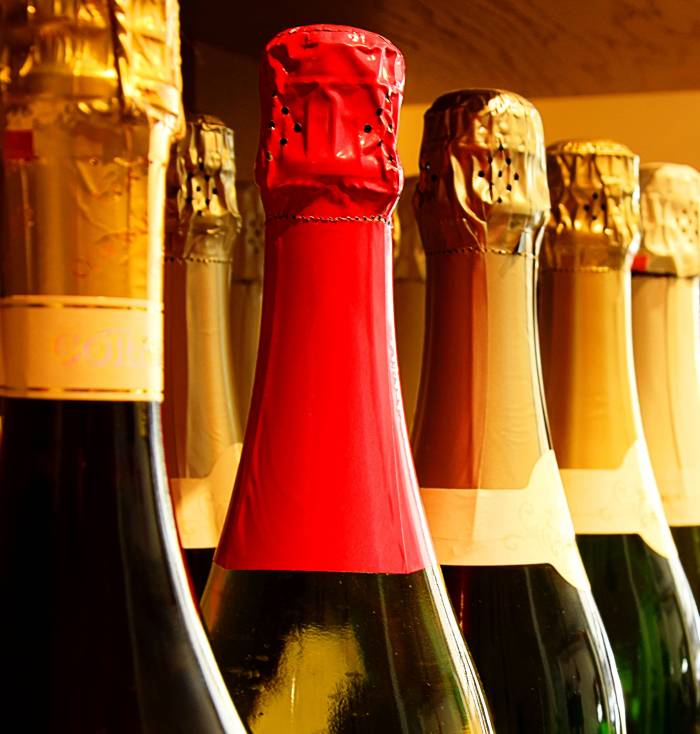Wine packaging shapes consumer perceptions and brand identity in a crowded market
Design choices in bottles, labels, and materials influence expectations of quality, price, and style before the wine is tasted
2025-08-19

In the wine industry, packaging plays a crucial role in shaping how consumers perceive a brand. When shoppers face a crowded store aisle or scan a lengthy wine list, the bottle’s appearance often forms their first impression. This moment of decision drives the work of design studios, glass manufacturers, printers, and fulfillment teams. The choices made in packaging influence expectations about price, origin, and style before anyone even opens the bottle.
Bottle shape and weight are among the most visible signals. Classic forms like Bordeaux’s high-shouldered bottle, Burgundy’s sloped profile, and Alsace’s tall flute carry cultural meanings that help buyers identify a wine’s style at a glance. Producers use these shapes to reinforce their brand message. For example, a Cabernet Sauvignon in a Bordeaux bottle suggests tradition, while a Pinot Noir in a Burgundy bottle hints at elegance. Glass weight also matters. Heavier bottles have long been associated with luxury wines, especially in California and southern Europe. Although sustainability concerns have led some producers to use lighter bottles, many consumers still link heft with higher price.
Label design is another key element. Choices in typography, color, and imagery all send messages. Serif fonts and muted colors often suggest heritage and reserve, while sans-serif fonts and bold graphics signal modernity and approachability. Tactile finishes like embossing or foil can make a bottle stand out on the shelf and add perceived value. Designers also consider how easily key information—such as varietal, origin, and price—can be read from several feet away.
The back label serves both storytelling and regulatory functions. It typically offers a brief narrative about the wine, serving suggestions, and required legal information. Closures also communicate quality and intent. Natural cork remains popular for fine wines and signals age-worthiness. Technical corks offer consistency for mid-priced wines, while screwcaps—once seen only on entry-level bottles—are now common even for premium wines meant to be enjoyed young. Sparkling wines use wire cages and heavy foils to convey ceremony and care.
Glass color affects both protection and appearance. Dark green or amber bottles help preserve delicate aromas by blocking light, which is important for white wines displayed under bright lights. Clear glass is often used for rosé or aromatic whites to showcase color as part of the appeal. Some wineries invest in custom glass molds or embossed logos to create distinctive brand assets visible from afar, though these features add cost.
Secondary packaging also plays a role in positioning. Cases used in warehouses or club stores often repeat branding elements to create visual impact. In direct-to-consumer sales, packaging choices such as molded pulp inserts or handwritten notes reinforce sustainability claims and personal service. For e-commerce orders, the condition of the box upon arrival can influence perceptions of quality before the wine is even tasted.
Regulation shapes what can appear on labels in the United States and abroad. Required statements include brand name, varietal, appellation, vintage year, alcohol content, government warnings, and sulfite disclosures. Export markets may require additional information such as translated ingredients or recycling symbols. To keep labels uncluttered while meeting these demands, some producers use QR codes or digital tags to provide extra details online.
Sustainability has become increasingly important over the past decade. Lightweight glass reduces shipping costs and carbon footprint—a priority for brands with national or international distribution. Recycled paper labels and water-based inks appeal to environmentally conscious buyers. Alternative formats like cans or bag-in-box are gaining ground for specific occasions such as outdoor events or everyday drinking.
Packaging must align with price point and brand strategy. Entry-level wines benefit from clear labeling that helps shoppers make quick decisions in supermarkets. Mid-tier wines often feature tactile upgrades and concise stories to justify higher prices in specialty stores. At the top end, minimal design paired with high-quality materials signals confidence in the product itself.
Producers also strive for portfolio cohesion by using shared design elements across different wines to help consumers navigate their offerings without confusion. Placement matters too: textured labels might attract attention in an independent wine shop in Portland; metallic accents could stand out on a Las Vegas bar; travel-safe packaging is important for airport duty-free sales.
Supply chain challenges have influenced packaging decisions as well. Fluctuations in glass availability or paper supply have led wineries to seek flexible solutions that maintain visual consistency even when materials change unexpectedly.
Technology is adding new layers to traditional craft methods. Variable data printing allows for small-batch numbering or limited-edition cues without changing production plates. Security features like microtext deter counterfeiting where provenance is critical. Augmented reality labels have created new ways for brands to engage consumers through mobile devices.
Ultimately, effective packaging must match what’s inside the bottle. Overpromising with flashy design but delivering average wine can damage trust; underplaying quality risks missing out on sales if the product blends into the background at its price point. The goal is coherence: every element—from label to closure to shipping box—should align with the winery’s identity and market position so that consumers can confidently choose the right wine for any occasion.
Founded in 2007, Vinetur® is a registered trademark of VGSC S.L. with a long history in the wine industry.
VGSC, S.L. with VAT number B70255591 is a spanish company legally registered in the Commercial Register of the city of Santiago de Compostela, with registration number: Bulletin 181, Reference 356049 in Volume 13, Page 107, Section 6, Sheet 45028, Entry 2.
Email: [email protected]
Headquarters and offices located in Vilagarcia de Arousa, Spain.